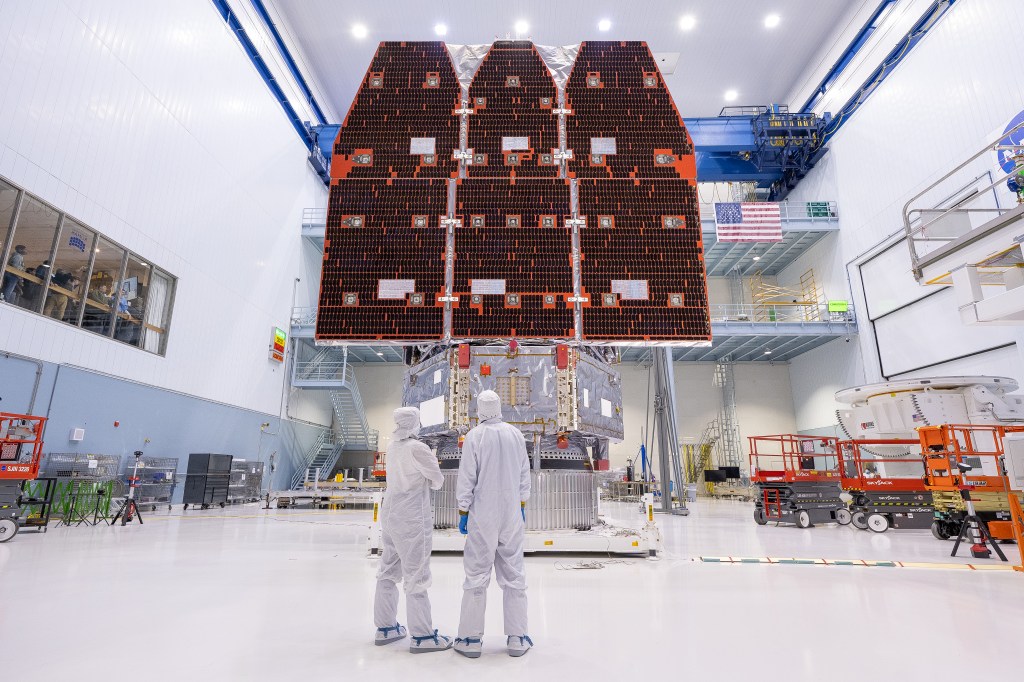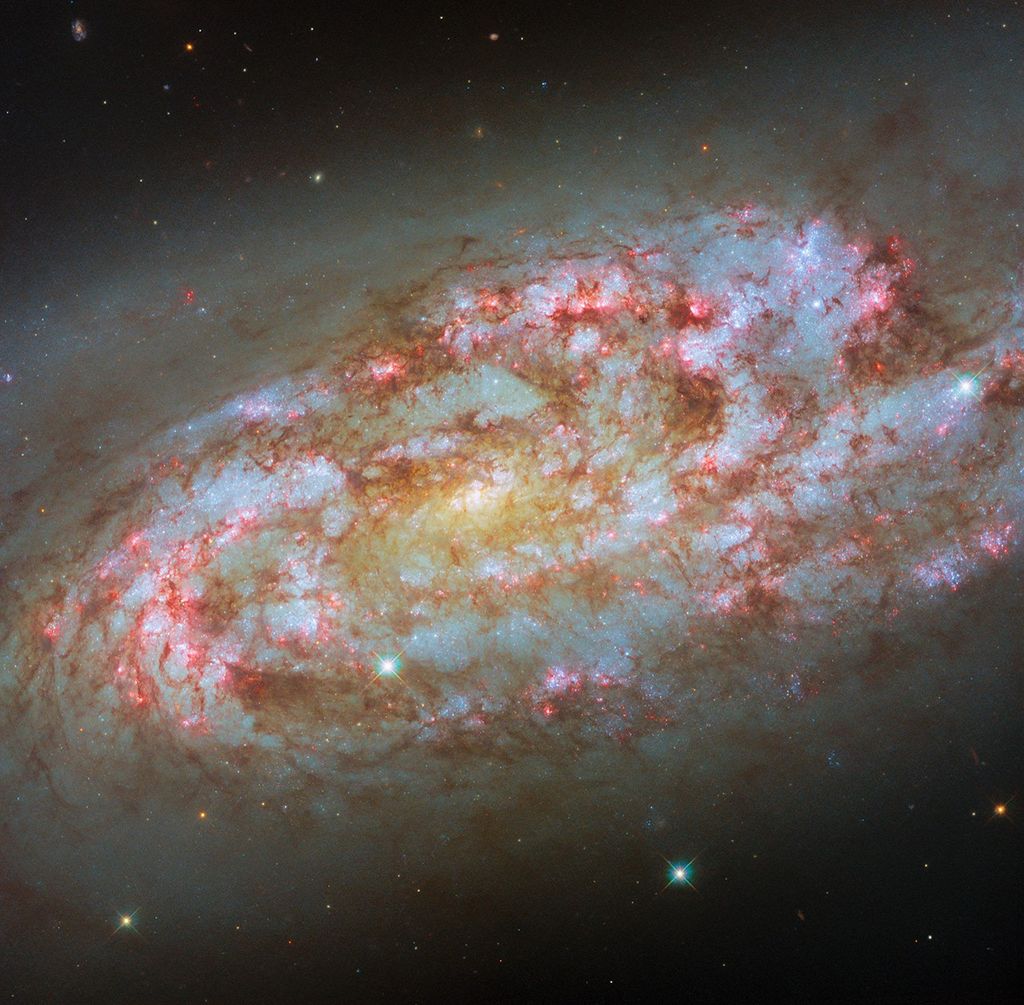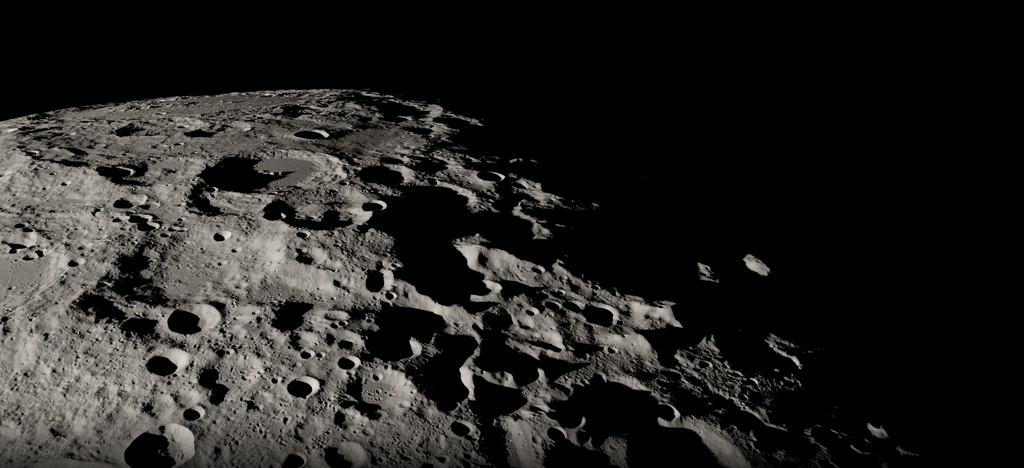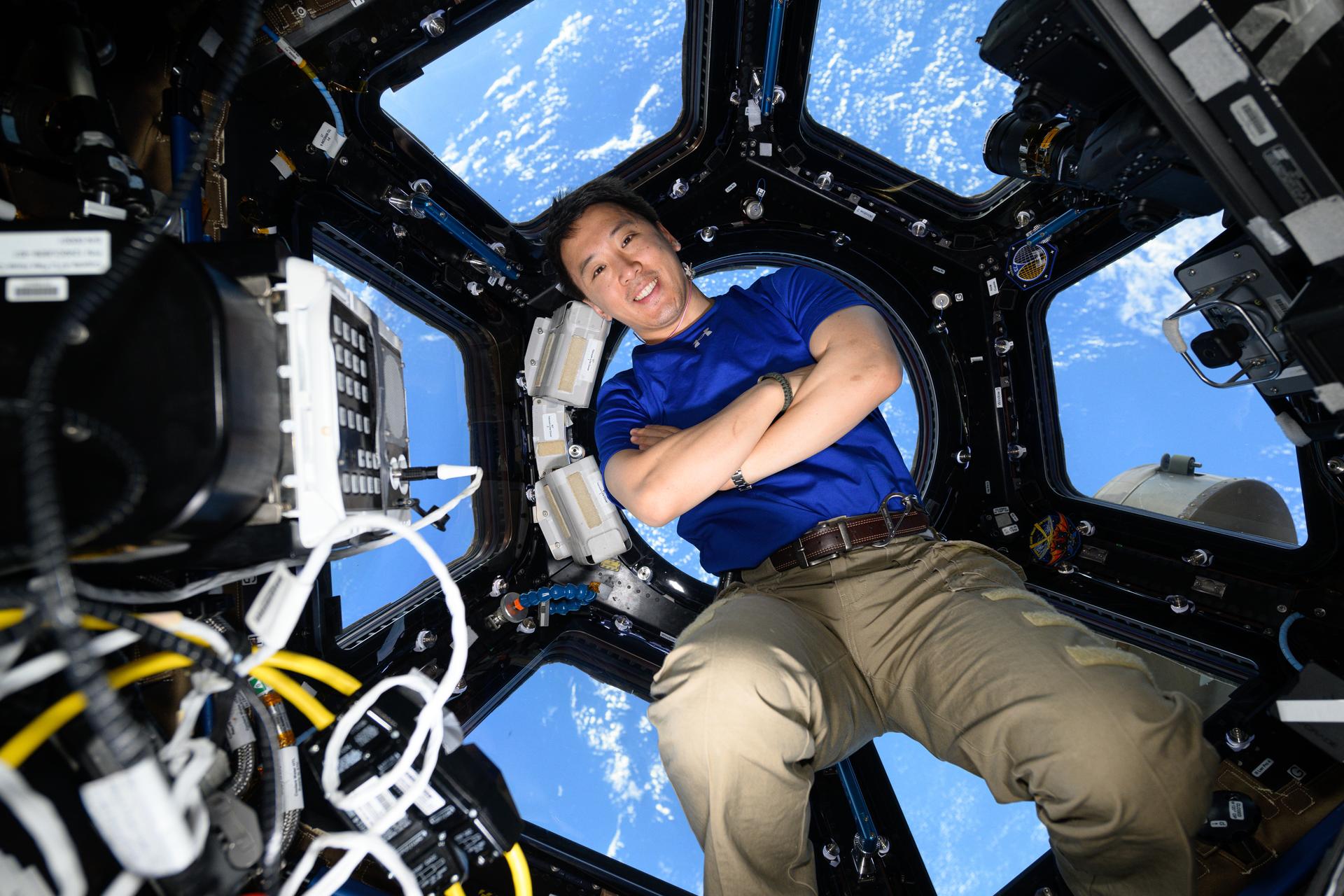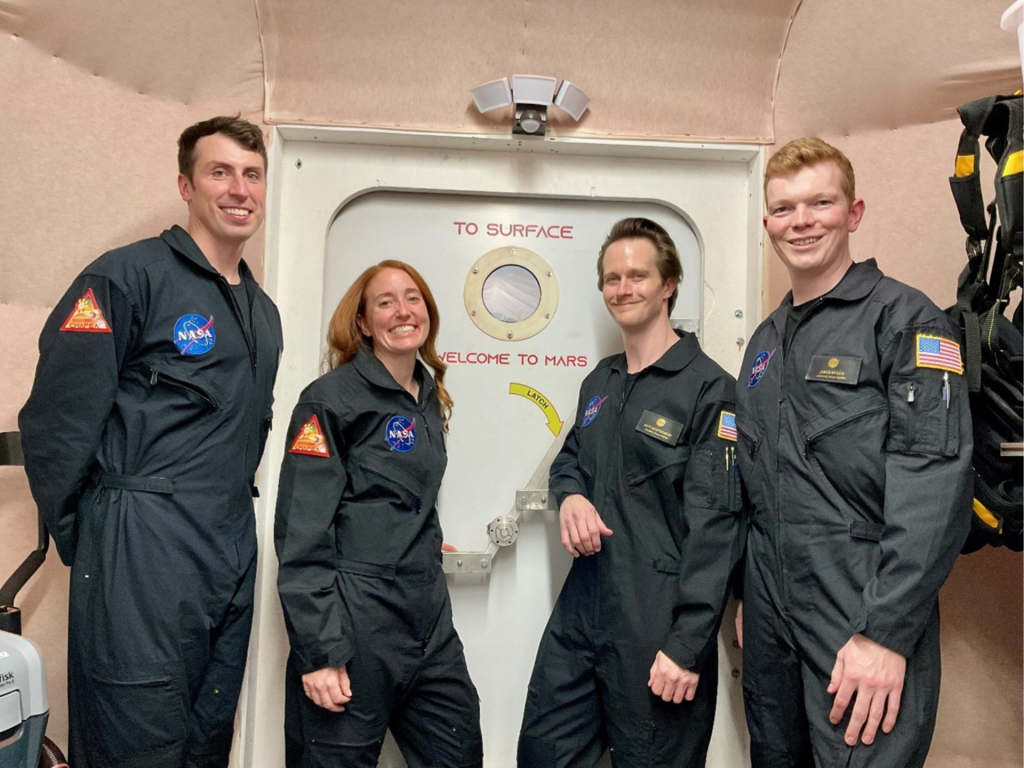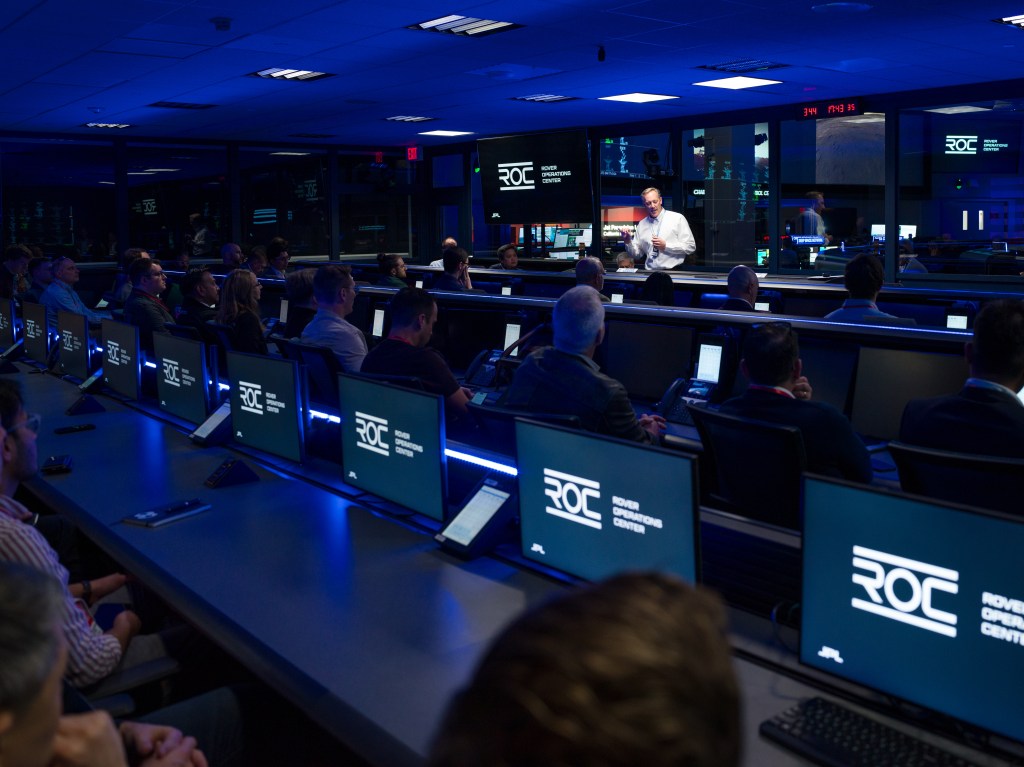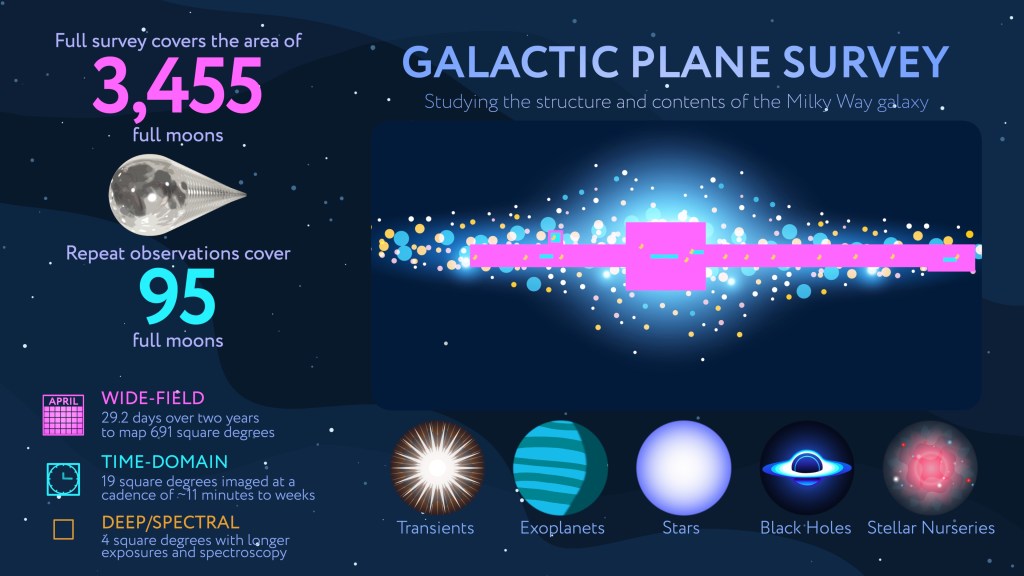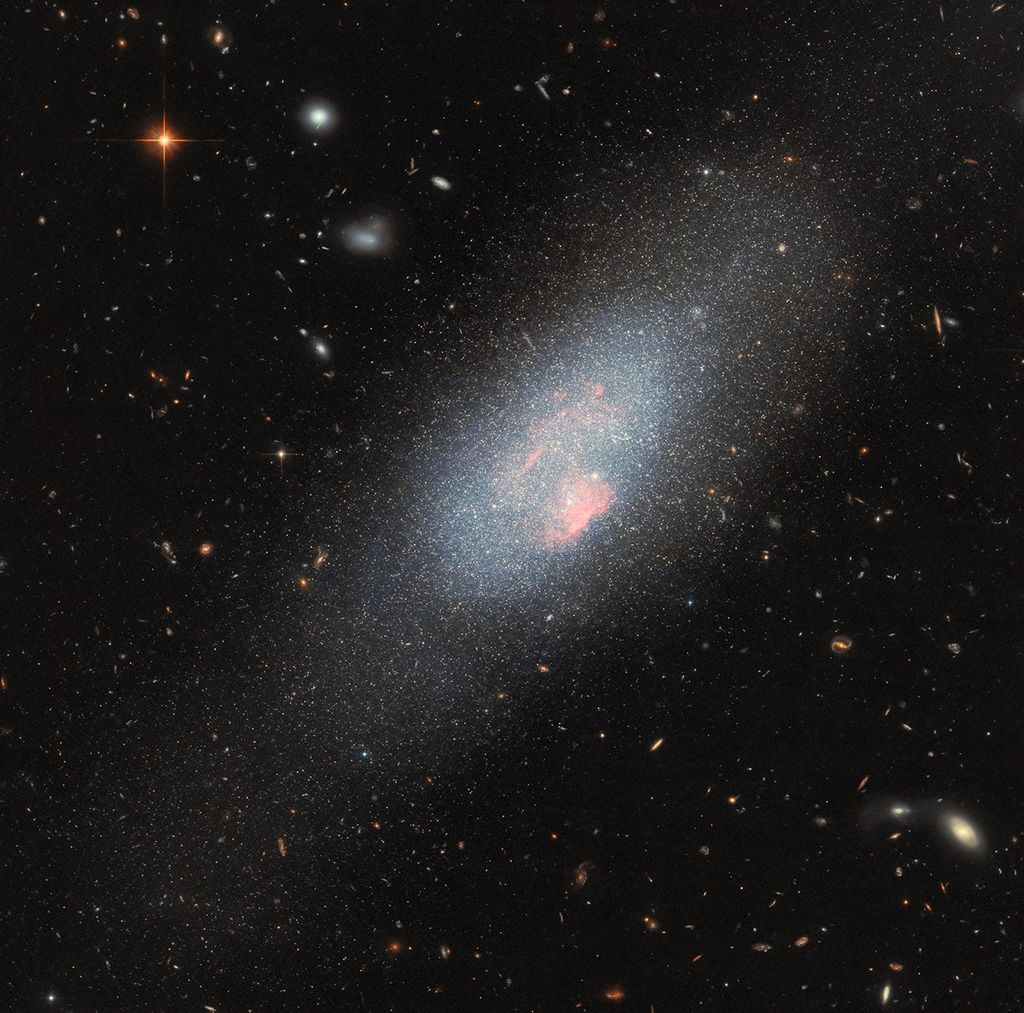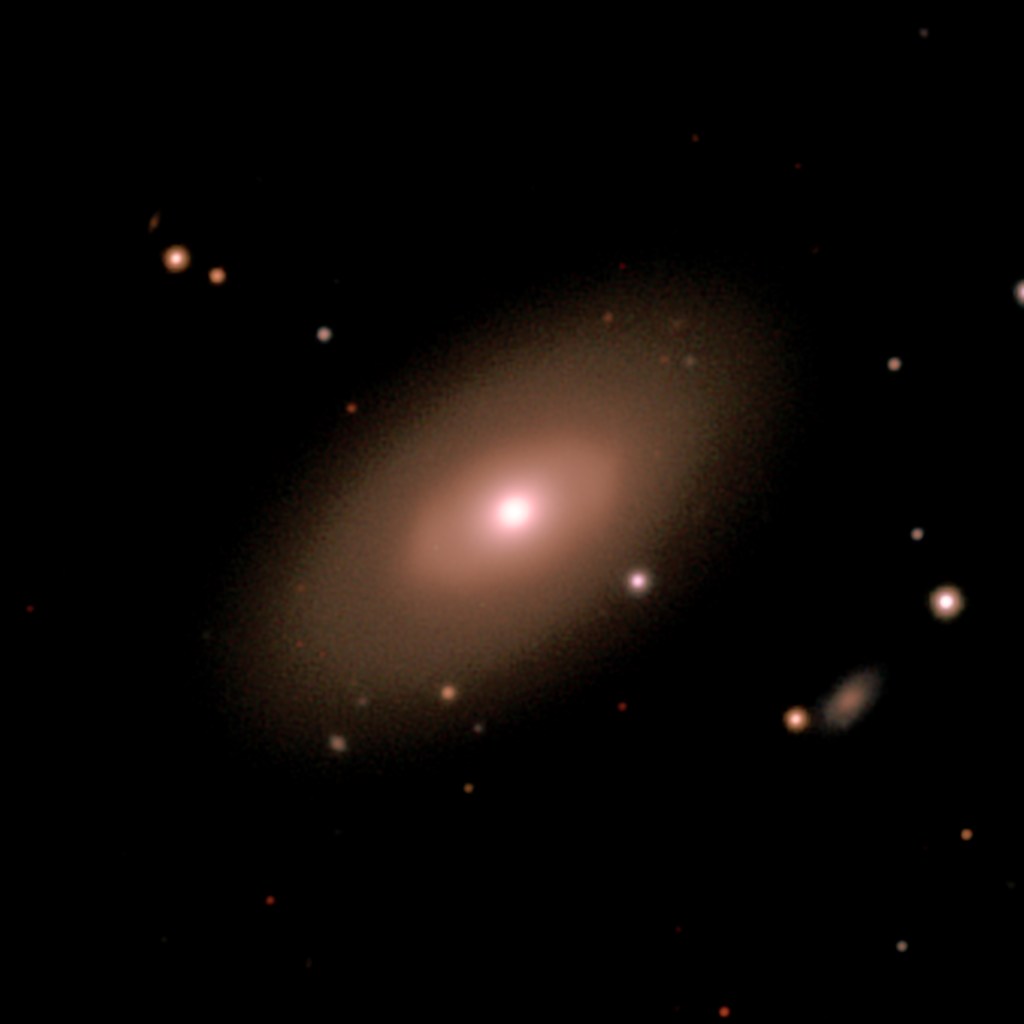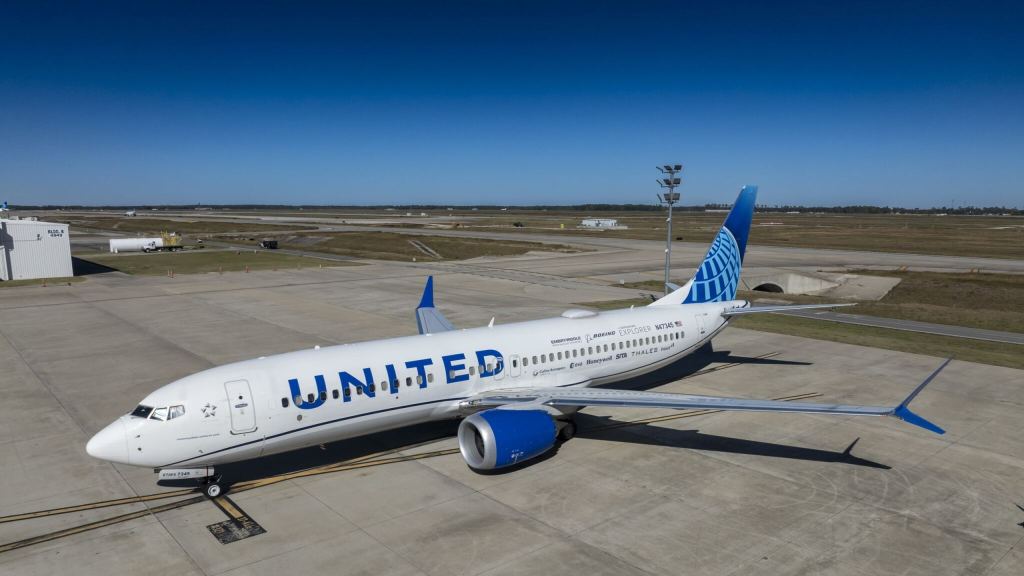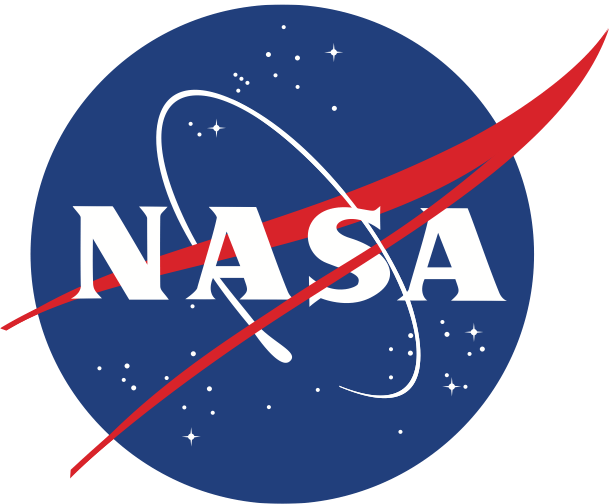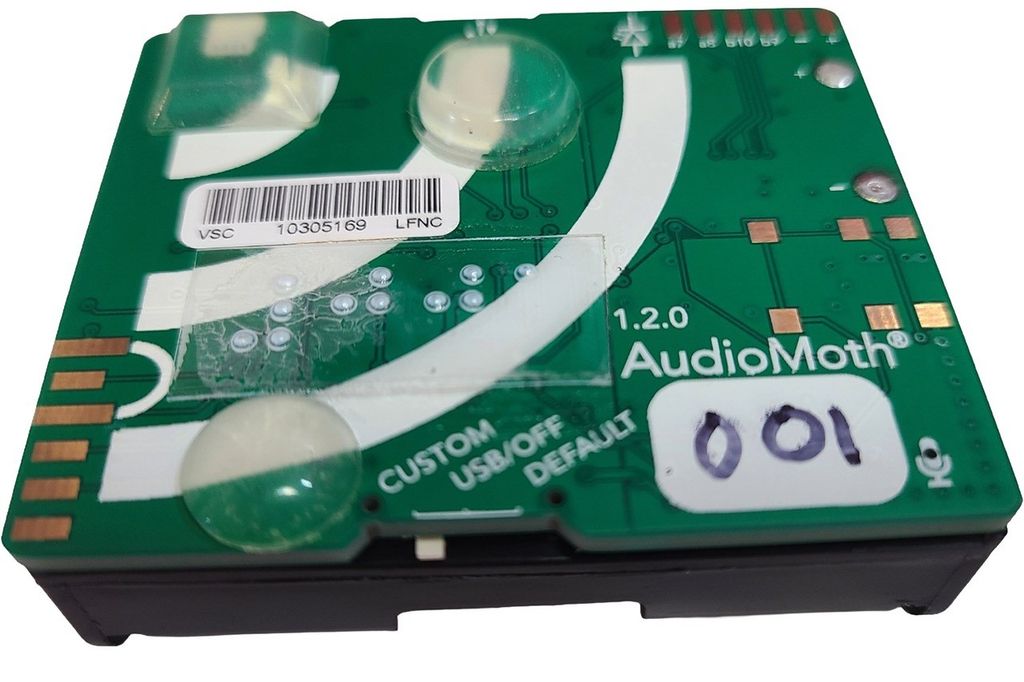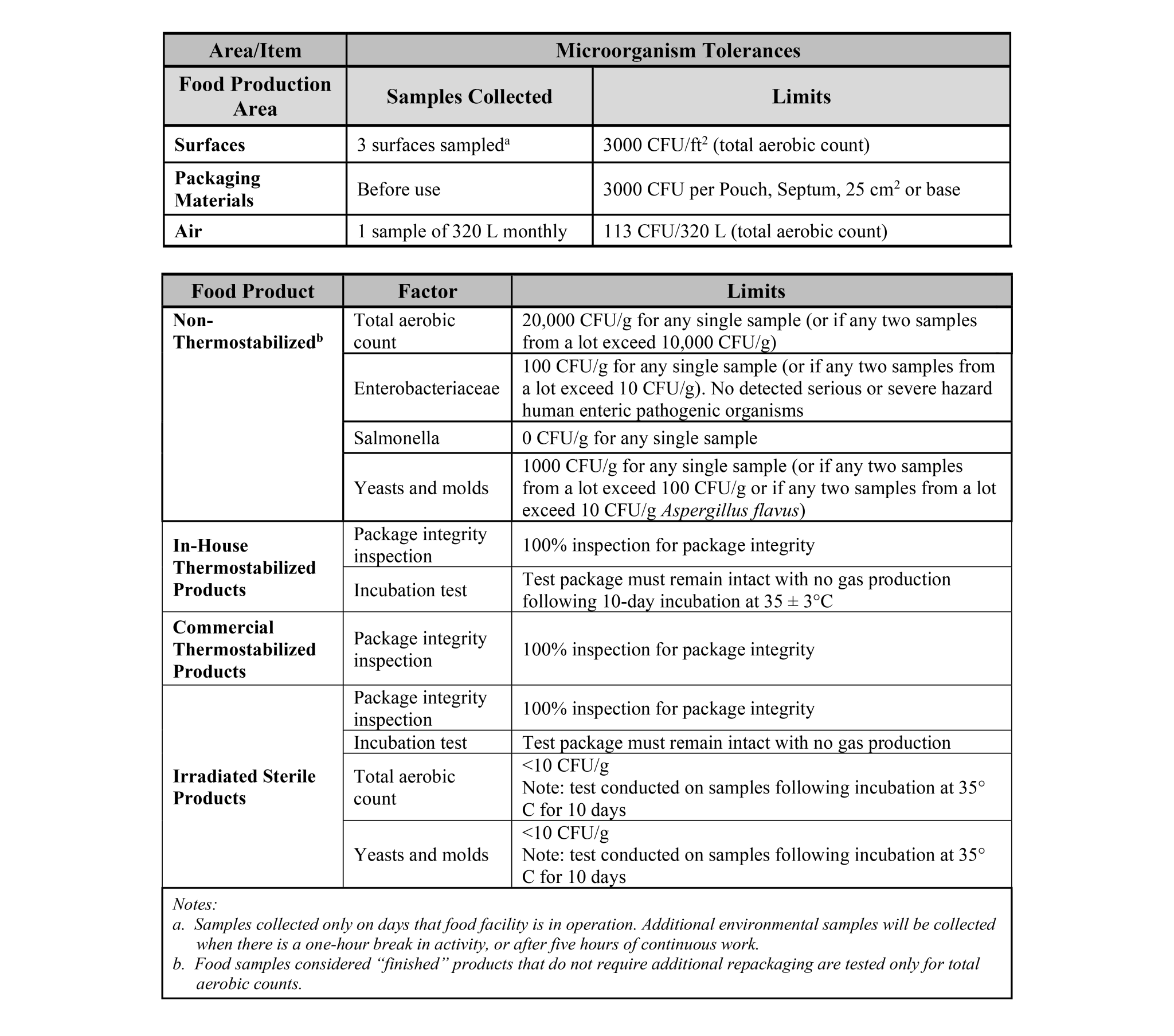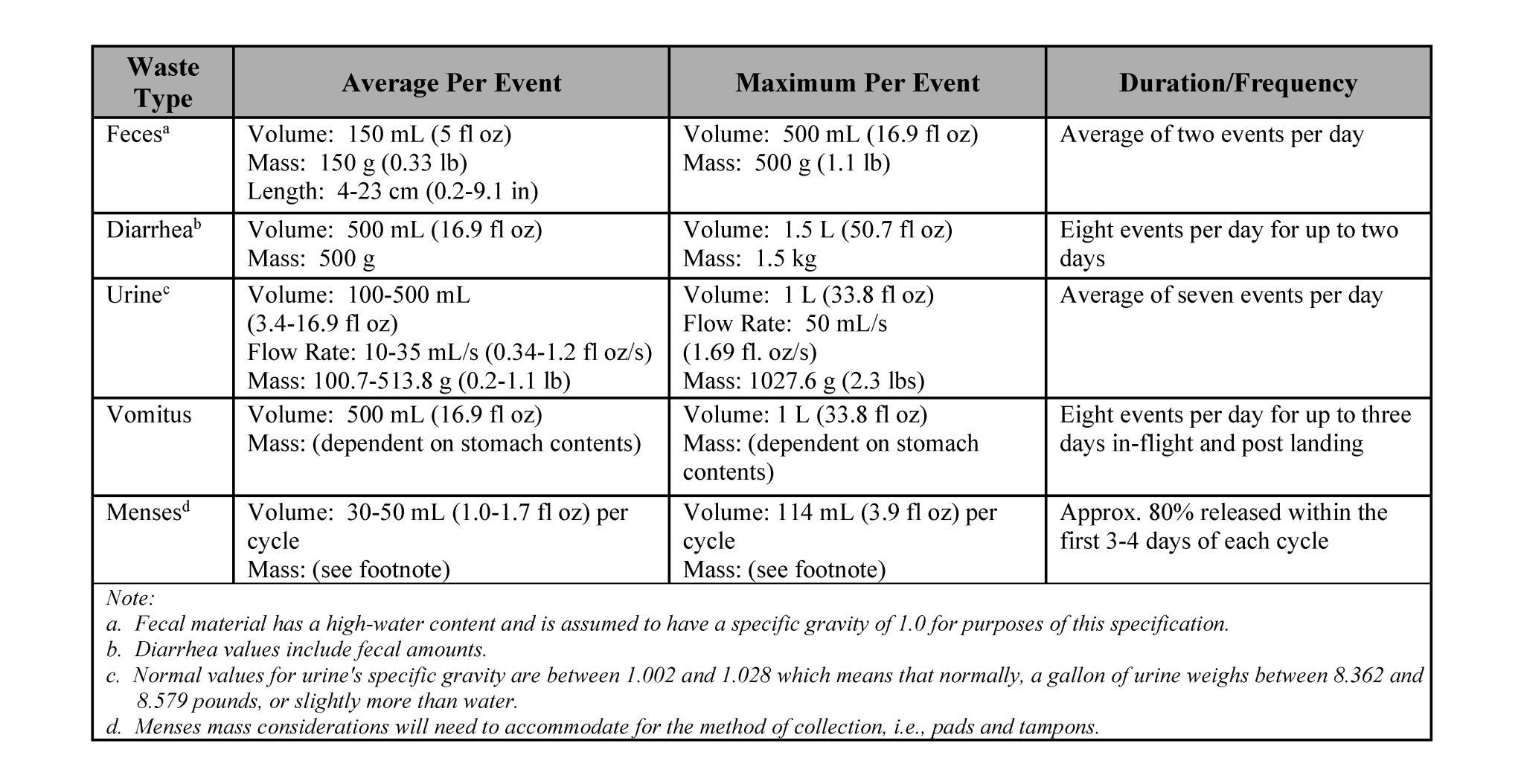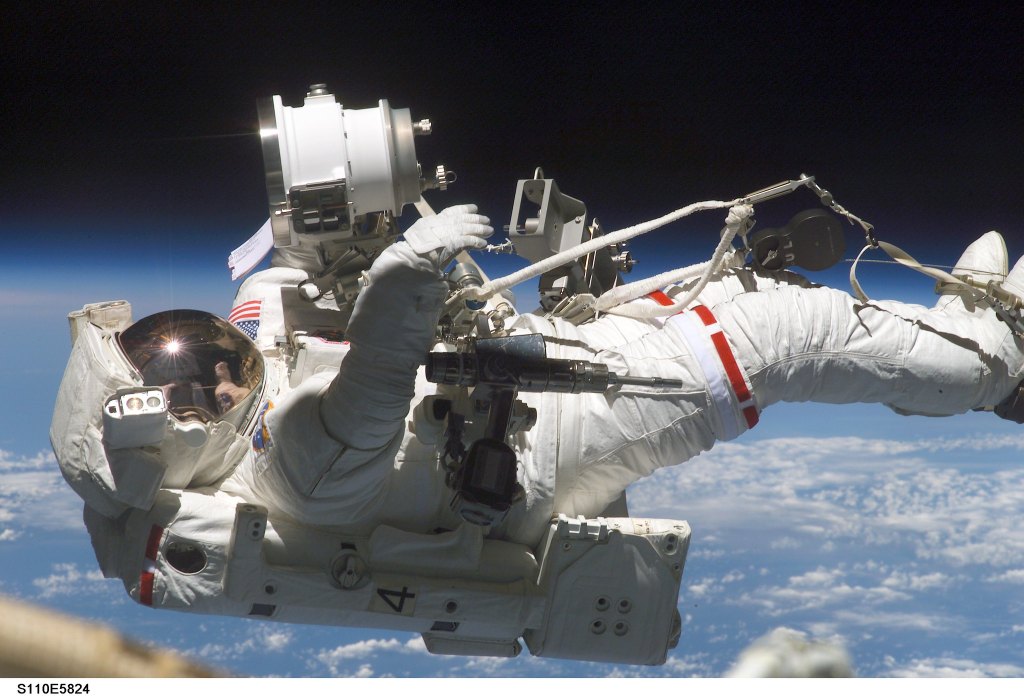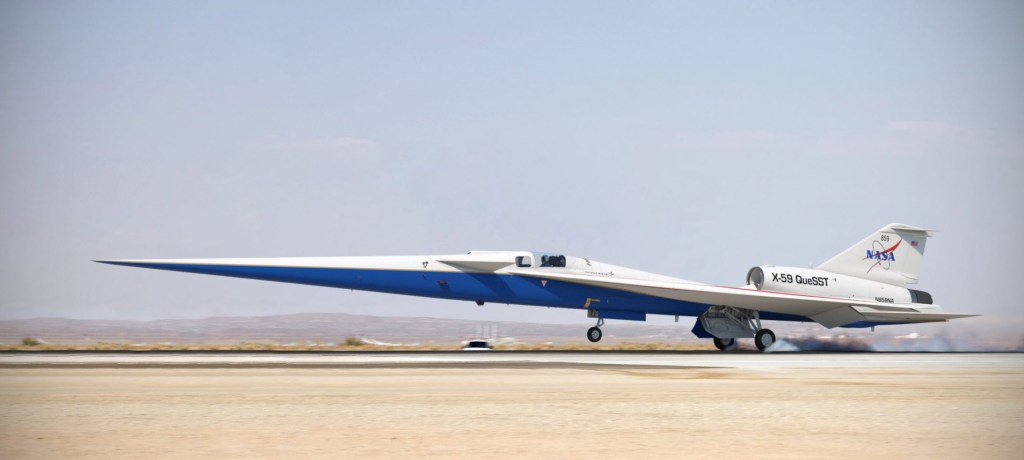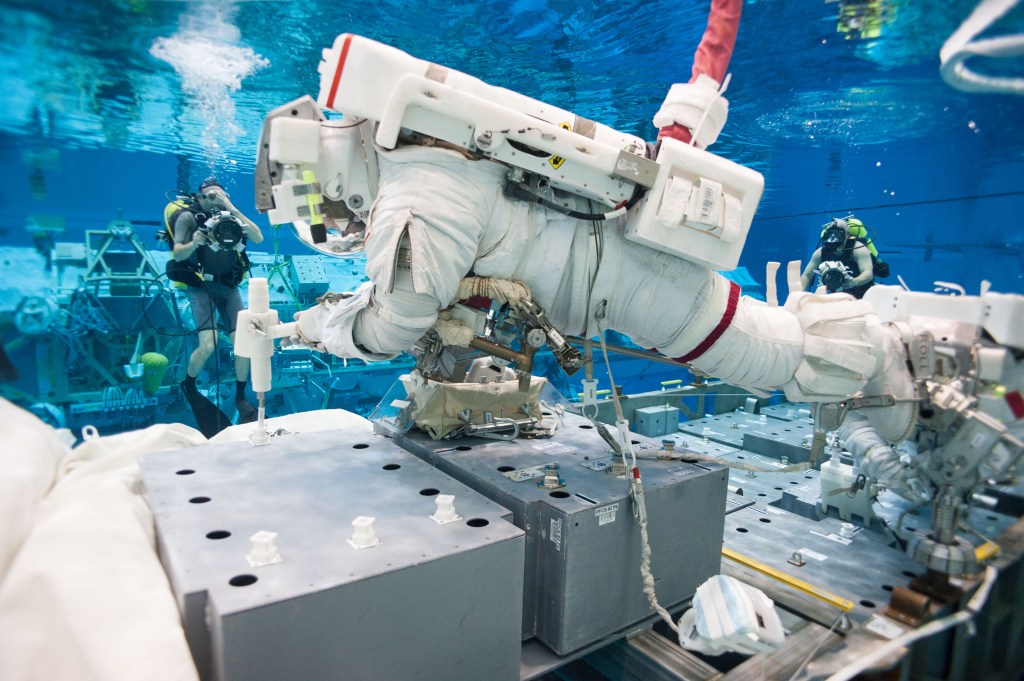7.0 Habitability Ability Functions

Contents
- 7.0 HABITABILITY FUNCTIONS
- 7.1 Food and Nutrition
- 7.2 Personal Hygiene
- 7.3 Body Waste Management
- 7.4 Physiological Countermeasures
- 7.5 Medical
- 7.6 Stowage Provision and Accessibility
- 7.7 Inventory Management System
- 7.8 Trash Management System
- 7.9 Behavioral Health and Sleep
- 7.10 Clothing
- 7.11 Housekeeping
- 7.12 Recreational Capabilities
7.0 HABITABILITY FUNCTIONS
This section addresses the features of the system required for human occupancy. The specific needs and designs for each feature vary with the type of mission.
7.1 Food and Nutrition
7.1.1 Food Quality and Quantity
7.1.1.1 Food Quality
[V2 7001] The food system shall maintain food safety and nutrition during all phases of the mission.
[Rationale: A nutritious, viable, and stable food system that the crew is willing and able to consume is critical for maintaining the health of the crew. The viability of the food system requires not only that food be available for consumption but also that the food has the appropriate nutrient mix to maintain crew health over time. The food is to retain its safety, nutrition, and acceptability for any spaceflight concept of operations, be it of short or long duration.]
7.1.1.2 Food Acceptability
[V2 7002] The system shall provide food that is acceptable to the crew for the duration of the mission.
[Rationale: A viable and stable food system that the crew is willing and able to consume is critical for maintaining the health of the crew. The crew’s willingness to consume these nutrients is impacted by the variety and flavor of the food. Consideration is given to provide a variety of food frequency, texture, and flavor while maintaining nutritional integrity as these factors can affect crew food acceptance. Additionally, crews originating from different cultural backgrounds and eating habits can influence the development of the food menu options or items supplied.
The dynamics of spaceflight present numerous challenges to food acceptability. A NASA food item measuring an overall acceptability rating of 6.0 or better on a 9-point hedonic scale for the duration of the mission is considered acceptable. The hedonic scale is a quantitative method that is accepted throughout the food science industry as a means to determine acceptability. Further information regarding methods for determining food acceptability can be found in Meilgaard, M., et al. (1999). Food freshness will impact acceptability over time; thus, it is imperative to provide acceptable food initially and a packaging and storage system that will maintain this freshness. Alternatives include growing food or providing basic ingredients and allowing flexibility in their combination and preparation, as well as providing the crew with various condiments to adjust flavors as needed due to the fluid shifts in their sinuses. The ability to customize with some preference foods and with condiments is important to add some variety and customization, which can help to prevent menu fatigue and support adequate consumption, especially as missions become longer.]
7.1.1.3 Food Caloric Content
7.1.1.3 Food Caloric Content
[V2 7003] The system shall provide each crewmember with an average of 12,698 kJ (3,035 kcal) per day, else an average energy requirement value is determined using Table 7.1-1—EER Equations and applying an activity factor appropriate to the mission gravity and planned level of physical activity.
[Rationale: The energy intake provisioning will need verification by analysis to determine energy content of each food item and subsequent menu. The minimum number of calories per day is based on the estimated energy requirements (EER) with an activity factor (AF) of 1.25 (active) as calculated according to Table 7.1-1 EER Equations. With this activity factor applied, the average for 84 male crewmembers with an average body mass of 82.9 kg is 12,724 kJ (3,041 kcal). The average for 20 female crewmembers with an average body mass of 65.1 kg is 9,807 kJ (2,344 kcal). This equation is based on National Academy of Medicine’s Dietary Reference Intake (DRI). Refer also to document JSC 67378 Nutritional Requirements for Exploration Missions up to 365 days, which notes activity factors ranging from 1.0 to 1.25 based on local gravity and exercise capability.]
Table 7.1-1—EER Equations
7.1.1.4 EVA Food Caloric Content
[V2 7004] For crewmembers performing EVA operations, the food system shall provide an additional 837 kJ (200 kcal) per EVA hour above nominal metabolic intake as defined by [V2 7003] Food Caloric Content, of this NASA Technical Standard.
[Rationale: Additional energy and nutrients are necessary during EVA operations, as crewmember energy expenditure is greater during those activities. Consumption of an additional 837 kJ (200 kcal), similar in nutrient content to the rest of the diet, per hour of EVA would allow a crewmember to maintain lean body weight during the course of the mission. This is the metabolic energy replacement requirement for moderate to heavy EVA tasks.]
7.1.1.5 Food Nutrient Composition
[V2 7100] The system shall provide a food system with a diet including the nutrient composition that is indicated in the Dietary Reference Intake (DRI) values as recommended by the National Institutes of Health, with the exception of those adjusted for spaceflight as noted in Table 7.12—Nutrient Guidelines for Spaceflight.
[Rationale: Macronutrients are nutrients that provide calories for energy and include carbohydrates, protein, and fat. Micronutrients are essential elements the body uses in trace amounts and can include vitamins and minerals. These are necessary to maintain the health of the crew. It is recommended that all food and ingredients are sourced from a major chain grocery store or food companies with a quality assurance system in place that audits their suppliers for compliance with federal, state, and local food regulations and laws including but not limited to Food Safety Modernization Act (FSMA), Current Good Manufacturing Practices (CGMP), Hazard Analysis, and Risk-Based Preventive Controls in accordance with the Code of Federal Regulations (CFR) Title 21 and Title 9 as applicable.]
Table 7.1-2—Nutrient Guidelines for Spaceflight
7.1.1.6 Food and Impacts to Environmental Systems
7.1.1.6 Food and Impacts to Environmental Systems
[V2 7110] Food items and packaging shall be evaluated for impacts on vehicle systems.
[Rationale: Foods and packaging material are subject to off-gas testing before approval for flight. For example, use of alcohol on the ISS is prohibited due to impacts to the ISS ECLSS. Use of any ingredients containing even small quantities of alcohol, such as ethanol in extracts, vinaigrettes, or cooking wine, require a review to ensure no effects to any environmental control or waste management systems. These items will need to be evaluated as noted in [V2 6023] Trace Constituent Monitoring and Alerting and [V2 6050] Atmosphere Contamination Limit. Liquids or foods containing alcohol also need to be evaluated per NASA-STD-6016 to determine flammability impacts in relation to the atmospheric parameters, especially O2 saturation. Additionally, food items selected need to consider the impacts to metabolic waste and water recovery system.]
7.1.2 Food Safety
7.1.2.1 Food Safety
[V2 7111] The program shall maintain flight food safety throughout product life cycle.
[Rationale: Food safety is important during flight. Unsafe food could cause food poisoning with symptoms including stomach cramping, nausea, vomiting, diarrhea, and dehydration. With limited medical capability and limited food inventory in spaceflight, it could cause loss of mission objectives. Additional information on pre- and post-launch food service operations, especially how it aligns with the Health Stabilization Program (HSP), can be found in JSC 67627, Pre-Launch and Post-Landing Food Service Operational Procedures.]
7.1.2.2 Food Production Facility
[V2 7112] The facility where food is prepared, processed, packaged, stowed, and stored shall comply with applicable laws and regulations, or FDA equivalent, as well as industry Good Manufacturing Practice standards.
[Rationale: This could include limited access to prevent food adulteration. All personnel working directly with food intended for human consumption are expected to receive food handling training equivalent to or exceeding the requirement for obtaining a food handler’s permit from the local health authority (i.e., ServSafe® certification, or the equivalent). Appropriate personnel behaviors that can contaminate food, such as properly washing and caring for hands and wearing proper PPE (e.g., disposable lab coat, hair nets, face mask, gloves, and beard nets when applicable) are required when handling exposed food and packaged food for flight at NASA.]
7.1.2.3 Food and Production Area Microorganism Levels
[V2 7007] Microorganism levels in the food and production area shall not exceed those specified in Table 7.1-3—Food Microorganism Levels.
[Rationale: To maintain the health and safety of the crew, it is necessary to control microorganism growth. The facility where food is prepared, processed, packaged, stowed, and stored will need to comply with applicable federal/state/local laws and regulations and industry Good Manufacturing Practice standards.]
Table 7.1-3—Food and Production Area Microorganism Levels
7.1.2.4 Food Contamination Control
[V2 7010] The food storage, preparation, and consumption areas within the vehicle shall be designed and located to protect against cross-contamination between food and the environment.
[Rationale: Contamination can occur from a number of sources within the vehicle due to the closed environment, including proximity to cross-contamination, toxic materials, and the growth of microorganisms. Food is to be processed properly and stored to control or eliminate microbiological concerns. Furthermore, it is critical for crew physical and psychological health that waste management systems (such as food waste, body waste, personal hygiene, exercise) are separate from food preparation, stowage, and consumption activities to protect from crosscontamination. Spaceflight lessons learned indicate this has been an issue during Apollo and ISS missions.]
7.1.2.5 Food System Cleaning and Sanitizing
[V2 7015] The system shall provide methods for cleaning and sanitizing food facilities, equipment, and work areas.
[Rationale: The ability to clean and disinfect the food system areas helps to minimize microbial contamination of the food system. Contamination of the food system by physical debris can jeopardize the safety and health of the crew.]
7.1.2.6 Food Spill Control
[V2 7014] The system shall provide the ability to contain and remove food particles and spills.
[Rationale: The ability to clean spills or food particles in any area of the vehicle helps to minimize contamination of the spacecraft. Contamination of the food system might occur if spills are not contained, and the physical debris of food particles can jeopardize the safety and health of the crew.]
7.1.3 Food Preparation, Consumption, and Cleanup
7.1.3.1 Food Preparation
[V2 7008] The system shall provide the capability for preparation, consumption, and stowage of food.
[Rationale: A viable and stable food system that the crew is willing and able to consume is critical for maintaining the health of the crew. Preparation addresses the heating of the food, if necessary, and the use of required equipment. Consumption relies on utensils or implements such as forks or spoons, a method to open packaging, or a method to rehydrate. Stowage is needed for the food, as well as all the implements for preparation and consumption.]
7.1.3.2 Food Preparation and Cleanup
[V2 7009] The food system shall allow the crew to unstow supplies, prepare meals, and clean up for all crewmembers within the allotted meal schedule.
[Rationale: Meal preparation and clean up activity planning takes into account previous spaceflight lessons learned, the water delivery and food heating systems, stowage configuration, and desire of the crew to dine together. This is to help ensure that mission goals, objectives, and timelines are not negatively impacted.]
7.1.3.3 Food and Beverage Heating
[V2 7011] The system shall provide the capability to heat food and beverages to a temperature appropriate for the given item.
[Rationale: Heating is necessary for the subjective quality of food. Heating food and liquid enhances the palatability of some items, which is important for psychological health, as well as for ensuring that crewmembers eat the food provided. Maintaining the temperature of rehydrated food helps prevent microbial growth. The vehicle is to provide the ability to heat dehydrated and non-rehydrated foods.]
7.1.3.4 Dining Accommodations
[V2 7012] The system shall provide adequate volume and accommodations for crewmembers to dine together.
[Rationale: Dining together has been shown to support the crew’s psychological health and well-being. The food system must account for the volume for all the crewmembers to prepare their meal, gather simultaneously, and accommodate any equipment needed to restrain the food and implements, including utensils necessary for dining. The design and layout of the dining space is based on a functional task analysis. The specific volume and layout are to meet the requirements defined in Section 8, Architecture, in this NASA Technical Standard. Additional guidance for design for habitable volume is provided in Chapter 8 of the Human Integration Design Handbook (HIDH).]
7.2 Personal Hygiene
7.2.1 Personal Hygiene Capability
[V2 7016] Personal hygiene items shall be provided for each crewmember, along with corresponding system capabilities for oral hygiene, personal grooming, and body cleansing.
[Rationale: Oral hygiene and personal grooming activities are to be accommodated by the system through provision of adequate and comfortable bathing and body waste management facilities as these enhance self-image, improve morale, and increase productivity of the crewmember. Each crewmember is to have personal hygiene provisions, e.g., toothbrush, toothpaste, moistened cloth wipes for body cleansing, deodorant for odor control, oral hygiene, and personal grooming throughout each space mission. Personal hygiene equipment and supplies are to accommodate the physiological differences in male and female crewmembers in microgravity and partial gravity environments. Considerations for crew acceptability should be taken into account as this will impact their overall behavioral performance.]
7.2.2 Body Cleansing Privacy
[V2 7017] The system shall provide for privacy during personal hygiene activities.
[Rationale: Certain hygiene functions are to have a degree of privacy, especially in a vehicle in which other crewmembers may be performing other functions simultaneously. Privacy provides for the psychological well-being of the crew and is to be provided for whole-body and partialbody cleaning and donning and doffing of clothing.]
7.2.3 Hygiene Maintainability
[V2 7019] The system shall provide an environmentally compatible sanitization method for personal hygiene facilities and equipment.
[Rationale: To remain hygienic, personal hygiene equipment is to be easily cleaned, sanitized, and maintained. Cleaning and sanitizing helps control odor and microbial growth. As part of the overall maintenance of the hygiene facilities, crewmembers are to have readily accessible trash collection for disposable personal hygiene supplies to minimize crew exposure to the used items.]
7.3 Body Waste Management
7.3.1 Body Waste Management Facilities
7.3.1.1 Body Waste Management Capability
[V2 7020] The system shall provide the capability for collection, containment, and disposal of body waste for both males and females.
[Rationale: A body waste management system facilitates the clean, efficient, and reliable collection and management of human waste (urine, feces, vomitus, and menses) and associated equipment and supplies.]
7.3.1.2 Body Waste Management System Location
[V2 7021] The body waste management system shall be isolated from the food preparation and consumption areas for aesthetic and hygienic purposes.
[Rationale: Contamination can occur from a number of sources, including proximity to crosscontamination and the growth of microorganisms. It is critical for crew physical and psychological health that any interference between body waste management functions and food preparation and consumption be prevented. The isolation of the body waste management system can be achieved by a physical barrier and/or distance from the food system areas to prevent concerns from cross-contamination. Spaceflight lessons learned indicate this has been an issue during Apollo and ISS missions. For example, due to the close proximity (about 1-foot) of the food system area and body waste management areas, the Apollo crews commented on having diminished appetites. Additionally, complaints from Skylab included the difficulties during defecation due to the awkward placement of the toilet.]
7.3.1.3 Body Waste Management Privacy
[V2 7022] The system shall provide privacy during use of the body waste management system.
[Rationale: Certain hygiene functions are to have a degree of privacy, especially in a vehicle in which other crewmembers may be performing other functions simultaneously. Privacy provides for the psychological well-being of the crew and is to be provided for use of the body waste management system.]
7.3.1.4 Body Waste Management Provision
[V2 7023] Body waste management supplies shall be provided for each crewmember and be located within reach of crewmembers using the body waste management system.
[Rationale: Personal hygiene and body waste management supplies such as tissues and towels may need to be accessed rapidly.]
7.3.1.5 Body Waste Accommodation
[V2 7024] The body waste management system shall allow a crewmember to urinate and defecate simultaneously without completely removing lower clothing.
[Rationale: Accidental discharge of one or both waste components into the habitable volume is not wanted, and it may be difficult for a human to relax the gastrointestinal control sphincter without relaxing the urinary voluntary control sphincter and vice versa. To minimize impact to crew operations, waste elimination needs to be accomplished with minimal crew overhead, e.g., without completely removing clothing.]
7.3.1.6 Body Waste Containment
[V2 7025] The system shall prevent the release of body waste from the body waste management system.
[Rationale: A release of waste into the closed environment of a spacecraft can contaminate the human and risk the initiation or spread of disease, and can also contaminate surfaces, materials, and consumables.]
7.3.1.7 Body Waste Odor
[V2 7026] The system shall provide odor control for the body waste management system.
[Rationale: Uncontrolled waste-associated odors can have an adverse effect on crew performance and can exacerbate pre-existing symptoms of space motion sickness.]
7.3.1.8 Body Waste Trash Receptacle Accessibility
[V2 7027] Body waste management trash collection shall be accessible to and within reach of crewmembers using the body waste management system.
[Rationale: Waste management items that cannot be collected and contained with human waste are to be disposed of immediately after use. Waste management trash collection items are to be within reach of the crewmember so that it is not necessary to egress the waste management restraint system or to access closed compartments.]
7.3.1.9 Body Waste Management Maintenance
[V2 7029] All body waste management facilities and equipment shall be capable of being cleaned, sanitized, and maintained.
[Rationale: To remain hygienic, body waste management equipment is to be easily cleaned, sanitized, and maintained. Cleaning and sanitizing helps control odor and microbial growth. As part of the overall maintenance of the hygiene facilities, crewmembers are to have readily accessible trash collection for disposable personal hygiene supplies to minimize crew exposure to the used items.]
7.3.1.10 Body Waste Isolation
[V2 7101] For missions greater than 30 days, the system shall provide separate dedicated volumes for body waste management and personal hygiene.
[Rationale: Evidence from ISS suggests that locating personal hygiene (e.g., body cleansing, personal grooming) in the same volume as body waste management is impractical and disliked by the crew. Conducting personal hygiene in the Waste and Hygiene Compartment (WHC) limits its use by other crewmembers. Additionally, due to the effects of microgravity, the WHC volume may not be sufficiently clean to support hygiene activities. ISS crewmembers improvise spaces aboard station to conduct personal hygiene that are separate from the WHC volume, which may lead to issues with space utilization and microbial growth due to water liberation. A dedicated space for personal hygiene with appropriate surfaces that limit microbial growth needs to be provided in future vehicles.]
7.3.2 Body Waste Capacity
7.3.2.1 Body Waste Quantities
[V2 7102] The human body waste management system shall be capable of collecting and containing the various human body waste as specified in Table 7.3-1—Body Waste Quantities, for the expected needs of each mission and task.
[Rationale: Body waste collection is to be performed in a manner that minimizes the possible escape of feces, urine, vomitus, or menses into the habitable volume during microgravity and partial gravity operations, not only due to the high content of microbes present in the feces, but also due to the potential injury to crewmembers and hardware that could result from inadvertent discharge into the cabin. The presence of bacteria in urine is not typical for healthy crew; however, during certain medical conditions, like urinary tract infections, there could be a presence of bacteria, so precautions must consider this.
The body will generate the same quantity of fecal material as is normal in terrestrial circumstances based on food consumption and an individual’s metabolism, with individual variables being evacuation frequency and water content. An individual can only evacuate the maximum value at a rate lower than average from limited food consumption inputs. Solid fecal matter is used to describe fecal material that is eliminated as discrete boli and will have surface characteristics that range from relatively dry to sticky depending on the internal water content, which is graphically demonstrated in a Bristol Stool chart derived from Heaton and Lewis, 1997. Diarrheal events are assumed to be in place of normal fecal elimination with the increased quantity based on increased water content and minor amounts of intestinal cellular material. In practice, a waste system is capable of accommodating fecal consistency across the continuum from solid low water content to diarrheal without allowing the escape of fecal material to the cabin environment. Alternatively, the urine output may be slightly greater or lower in various phases of the mission associated with gravity transitions and fluid intake levels.
Space Adaptation Syndrome (SAS) occurs in up to 70% of first-time fliers (30% of whom may experience vomiting) during the first 48 to 72 hours of microgravity. Also, a possible water landing may cause crewmembers to experience seasickness. Stowage and disposal are to be adequate for a worst-case number of involved crew, severity, and duration of symptoms, as well as the volume of gastrointestinal contents regurgitated. Vomiting and its associated odor, mainly produced by the compound butyric acid, may trigger a wave of bystander nausea and vomiting reaction in adjacent crewmembers in an enclosed space.
It is expected that female crew will have a menstruation cycle approximately every 27-31 days with a discharge of 30-50 mL of menses, with approximately 80% discharged in the first 3-4 days. The frequency and volume will vary from each crewmember. It should not be assumed that a crewmember is hormonally suppressed or that she will not have a change in her cycle or breakthrough bleeding at any point during a mission, thus appropriate capabilities of containing and disposing of menses must be accommodated.
The average values and frequencies of various body waste are representative over the entire mission (launch and return landing) and include occasional occurrences of the maximum values, which are noted in Table 7.3-1. Mass and volume values are for the biological material only; however, collection and containment will need to include both the biological material and all hygiene products required for immediate body cleaning after evacuation.
The collection capacity accounts for the healthy adult maximum output during a single event. The human body waste management system must always (nominally) be capable of collecting a maximum fecal event, as it is unknown when a maximum event will occur. The fecal discharge related to gastrointestinal illness (diarrhea) occurs at an increased frequency but is also variable, unpredictable, and largely dependent on etiology. Terrestrial sources of infectious, pathogenic diarrhea such as Rotavirus A and Enterotoxigenic Escherichia coli (ETEC) can produce single-episode volumes as high as 1.5 L. For NASA missions, the preflight crew quarantine period (refer to NASA-STD-3001, Volume 1) is utilized to reduce the risk of infectious disease in-flight. Potential in-mission sources of comparable high-volume diarrhea is from acute radiation events such as SPEs for missions beyond low earth orbit (refer to NASA-STD-3001, Volume 1) and/or food that is not properly stored and prepared (refer sections [V2 7007] Food and Production Area Microorganism Levels, [V2 7008] Food Preparation, [V2 7010] Food Contamination Control, [V2 7015] Food System Cleaning and Sanitizing and [V2 7021] Body Waste Management System Location). Both of these potential risks need to be addressed as part of whole mission planning. The total collection volume is to accommodate diarrhea caused by likely pathogens or from diarrhea caused by salt/fluid shifts. When a diarrhea event will occur is unknown, so the body waste management system may process the collection differently, e.g., no compaction. The urinary collection system is to be capable of collecting all of the crewmember’s output in succession, as well as the simultaneous evacuation of urine and feces with the presence of tissue from either sloughing or menses.]
Table 7.3-1—Body Waste Quantities
7.3.2.2 Fecal and Urine Elimination Concurrence
[V2 7085] The body waste management system shall be capable of collecting and containing all waste during simultaneous defecation and urination.
[Rationale: It is common for individuals to not be able to separate defecation and urination. Body waste collection systems design are to have sufficient capability to capture and contain both simultaneously.]
7.3.2.3 Urine per Crewmember
[V2 7035] The human body waste management system shall be capable of collecting and containing urine for either processing or disposal of an average total urine output volume of Vu = 3 + 2.5t liters per crewmember, where t is the mission length in days.
[Rationale: Urine production on the first day after launch, i.e., flight day 0, is 3 L (101.4 fl oz) per crewmember. Urine output may be slightly greater or lower in various phases of the mission associated with gravity transitions and fluid intake levels. Reference Table 7.3-1—Body Waste Quantities for maximum output values.]
7.4 Physiological Countermeasures
7.4.1 Physiological Countermeasures Capability
[V2 7038] The system shall provide countermeasures to meet crew bone, muscle, sensorimotor, thermoregulation, and aerobic/cardiovascular requirements defined in NASA-STD-3001, Volume 1.
[Rationale: Exercise is used to maintain crew cardiovascular fitness (to aid in ambulation during gravity transitions, minimize fatigue, maintain cardiovascular health and function, and preserve thermoregulation capacity), to maintain muscle mass and strength/endurance, for recovery from strenuous tasks and confined postures, to rehabilitate minor muscle injuries, and to maintain bone mass. Exercise also has behavioral health benefits. Exercise is to commence as early as possible during the mission and continue throughout all mission phases in accordance with results from the Apollo crew’s participation in the June 2006 Apollo Medical Summit (NASA/TM-2007-214755, The Apollo Medical Operations Project: Recommendations to Improve Crew Health and Performance for Future Exploration Missions and Lunar Surface Operations), and recommendations from the 2005 Operational and Research Musculoskeletal Summit. See Appendix A, Reference Documents, for complete citations.]
7.4.2 Physiological Countermeasure Operations
[V2 7040] The physiological countermeasure system design shall allow the crew to unstow supplies, perform operations, and stow items within the allotted countermeasure schedule
[Rationale: The ease and the efficiency of the countermeasure system assists in the crew being able to perform their countermeasure activities. These activities are necessary to maintain crew health and fitness. It can be expected that daily countermeasure activity will occur.]
7.4.3 Orthostatic Intolerance Countermeasures
[V2 7042] The system shall provide countermeasures to mitigate the effects of orthostatic intolerance when transitioning from weightlessness to gravity environments and during Az (head-to-foot) vehicle accelerations defined in the sustained acceleration limits.
[Rationale: Orthostatic protection is needed to minimize medical and operational impacts. Impacts can include loss of consciousness and decreased cognitive function leading to inability to operate controls, pilot mechanics, and egress vehicle without assistance, thus jeopardizing success or safety of the crew during reentry and landing. Examples of methods that have been successfully used to prevent orthostatic intolerance include fluid/salt loading regimens to restore hydration, lower body (abdomen and leg) compression garments to prevent blood pooling, active cooling to prevent peripheral blood pooling and heat injury, and recumbent crewmember seating to protect cerebral blood flow during Az (head-to-foot) vehicle accelerations (planetary and lunar) and return to gravity (planetary).]
7.5 Medical
7.5.1 Medical Capability
[V2 7043] A medical system shall be provided to the crew to meet the medical requirements of NASA-STD-3001, Volume 1.
[Rationale: NASA-STD-3001, Volume 1, includes Health and Medical Care Technical Requirements required to reduce the risk that exploration missions are impacted by crew medical issues and that long-term astronaut health risks are managed within acceptable limits. The Health and Medical Care Technical Requirements and associated appendices define the health care, crew protection, and maintenance capability required to support the crew as appropriate for the specific mission destination and duration, as well as for the associated vehicular constraints.]
7.5.2 Medical Equipment Usability
[V2 7045] Medical equipment shall be usable by non-physician crewmembers in the event that a physician crewmember is not present or is the one who requires medical treatment.
[Rationale: Medical equipment is to be simple and easy to use and require minimal training so that non-medical personnel can administer care to ill or injured crewmembers. Medical equipment also is to have consistent interfaces to assist in crew usability.]
7.5.3 Medical Treatment Restraints
[V2 7046] The medical system shall provide equipment to position and restrain a patient, care provider, and supplies during treatment.
[Rationale: Patient restraints are to be capable of preventing the motion of arms and legs, allow stabilization of the head, neck, and spine, and provide attachment to the spacecraft or habitat. Care provider restraints are to allow the care provider to remain close to the patient to administer treatment but are easily removable or allow movement to access nearby equipment. Equipment restraints are to be able to safely restrain large items such as medical kits, as well as individual items.]
7.5.4 Medical Treatment, Personal Supplies, and Impacts to Environmental Systems
[V2 7115] Medical treatment, including pharmaceuticals, non-pharmaceutical crew care items, and related supplies, shall be evaluated for impacts on vehicle systems.
[Rationale: Medical treatment (including pharmaceuticals and non-pharmaceutical crew care items) and packaging material are subject to off-gas testing before approval for flight. For example, use of alcohol on the ISS is prohibited due to impacts to the ISS ECLSS. Use of products containing even small quantities of alcohol such as pharmaceutical syrups, topical creams, or related supplies, require a review to ensure no adverse effects to any environmental control or waste management systems. Alcohol-containing items must also be evaluated per NASA-STD-6016 to determine flammability characteristics and impacts in relation to the atmospheric parameters, especially O2 saturation. Additionally, pharmaceuticals and related items and supplies must consider the impacts to metabolic waste and water recovery systems.]
7.6 Stowage Provision and Accessibility
7.6.1 Provision
Stowage provision includes stowage volume (e.g., containers, racks, shelves), and stowage restraints. Defined stowage space is needed to accommodate items including but not limited to crew personal items, crew hygiene and body waste supplies, medical supplies, cleaning supplies, and food. Some stowed items are removed from stowage, used, and then returned to the provided provisions/location. Other items are temporarily removed from stowage, relocated to another use location, and much later stowed. Stowage design for crew access needs must be defined through iterative crew task analysis and include frequency of use, stowed item criticality, operational use/need timeline and priority, interference from/to adjacent or parallel tasks, spacesuit or PPE configuration, and anthropometry (e.g., reach, clearance). For operational efficiency, design of stowage provisions should be integrated with inventory management, labeling, and operational nomenclature.
Programs based on type of contract, maturity of the vendor, and/or verification process may consider consolidating requirements [V2 7050], [V2 7051], [V2 7052], [V2 7053], [V2 7054] and [V2 7055] into the following requirement: “The system shall provide defined locations and stowage provisions that restrain stowed items under applicable environmental conditions (e.g., launch and landing loads,1g and/or micro and partial gravity) and enable crew access within operational time constraints as defined by crew task analysis.”
7.6.1.1 Stowage Provisions
[V2 7050] The system shall provide for the stowage of hardware and supplies, to include location, restraint, and protection for these items.
[Rationale: Some stowed items are removed from stowage, used, and then returned to the provided provisions/location. Other items are temporarily removed from stowage, relocated to another use location, and much later stowed.]
7.6.1.2 Personal Stowage
[V2 7051] The system shall provide a stowage location for personal items and clothing.
[Rationale: Stowage locations for personal items and clothing aids crew morale and well-being. When integrated with inventory management, labeling, and operational nomenclature, the stowing of and access to these personal items are accomplished efficiently.]
7.6.1.3 Stowage Location
[V2 7052] All relocatable items, e.g., food, EVA suits, and spare parts, shall have a dedicated stowage location.
[Rationale: To maintain a high level of efficiency in crew operations, it is important to locate items within easy reach of their point of use or consumption. Although difficult to achieve completely, all efforts are to be made to provide stowage for items manifested and flown. An important consideration is the need to keep the translation pathways clear and protect the volume necessary for the crew to execute their tasks safely and efficiently. Stowage is not to hinder the access to any emergency equipment.]
7.6.1.4 Stowage Interference
[V2 7053] The system shall provide defined stowage locations that do not interfere with crew operations.
[Rationale: Having defined stowage locations supports efficient operations and helps prevent the stowage system from interfering with operations such as translation and vehicle control. Care is to be taken when designing the stowage system so that clear translation can occur in the event of an emergency. To maintain a high level of efficiency in crew operations, it is important to locate items within easy reach of their point of consumption.]
7.6.1.5 Stowage Restraints
[V2 7054] The system shall provide the capability to restrain hardware, supplies, and crew personal items that are removed or deployed for use as defined by crew task analysis.
[Rationale: Stowed and deployed items are to be restrained so that they are secure for crew use and prevent uncontrolled movement causing injury, damage, or inefficient task performance under expected conditions for acceleration, vibration, or crew contact. Restraints must also be designed to facilitate operations in expected gravity environments. For example, in microgravity, restraints must be retainable in an open or loosened position to facilitate stow/unstow of items during stowage operations. Stowage restraints help protect the crew from injury and equipment from damage or loss and ensure that stowed or deployed items remain where required during operations and crew tasks.]
7.6.2 Accessibility
Accessibility means having the ability to reach and retrieve objects with relative ease. The following subsections define requirements for implementing this feature.
7.6.2.1 Priority of Stowage Accessibility
[V2 7055] Stowage items shall be accessible in accordance with their use, with the easiest accessibility for mission-critical and most frequently used items.
[Rationale: Items are to be stowed to promote efficient retrieval and operations.]
7.6.2.2 Stowage Operation without Tools
[V2 7056] Stowage containers and restraints shall be operable without the use of tools.
[Rationale: To maximize the use of crew time, the stowage system is to permit crew access and reconfiguration without the use of tools.]
7.6.2.3 Stowage Access while Suited
[V2 7057] The stowage system shall be accessible by a suited crewmember.
[Rationale: The stowage system must be designed to include features that allow a suited crewmember to access, open, close, or manipulate stowed items. This means the integrated system must accommodate suit constraints and volumetric requirements. This applies to normal as well as contingency operations.]
7.6.3 Identification System
[V2 7058] The stowage identification system shall be compatible with the inventory management system.
[Rationale: Space Shuttle and ISS experience has shown that stowage management and identification—the knowledge of the quantity, location, and type of each supply—is crucial for mission planning and maintaining crew productivity. Quantity and location are not the only aspects of stowage identification. Stowage, labeling, inventory tracking, and operational nomenclature are also considered when developing an integrated system.]
7.7 Inventory Management System
7.7.1 Inventory Tracking
[V2 7059] The system shall provide an inventory management system to track the locations and quantities of items (including hazardous trash) throughout the mission.
[Rationale: Space Shuttle and ISS experience has shown that inventory/stowage management— the knowledge of the quantity and location of each type of supply—is crucial for mission planning and maintaining crew productivity. Quantity and location are not the only aspects of inventory tracking. Stowage, labeling, and operational nomenclature are also considered when developing an integrated system.]
7.7.2 Inventory Operations
[V2 7060] The system shall be designed to allow inventory management functions to be completed within the allotted schedule.
[Rationale: The inventory management system is to be efficient, and the amount of time required by the crew to perform the functions of the system minimized. A flexible system allows for changes in stowage locations or quantities any time during missions. Lessons learned in past spaceflight have indicated that past inventory operations have exceeded the allocated time required to accomplish the tasks. This can interfere with other expected tasks.]
7.7.3 Nomenclature Consistency
[V2 7061] The nomenclature used to refer to the items tracked by the inventory management system shall be consistent with procedures and labels.
[Rationale: It is imperative that spaceflight operations personnel, including all ground controllers and crewmembers, communicate using common nomenclature that unambiguously and uniquely defines all hardware and software items. This nomenclature is also to be common among all operational products, including commands, procedures, displays, planning products, reference information, system handbooks, system briefs, mission rules, schematics, and payload operations products.]
7.7.4 Unique Item Identification
[V2 7062] Items that need to be uniquely identified shall have a unique name.
[Rationale: Unique names for inventory items assist in the location and clear identification of the items. This promotes efficiency and reduces the likelihood of mis-selection of items for tasks. This also assists to minimize training.]
7.7.5 Interchangeable Item Nomenclature
[V2 7063] Items within the inventory management system that are identical and interchangeable shall have identical nomenclature.
[Rationale: Names for inventory items assist in the location and clear identification of the items. This promotes efficiency and reduces the likelihood of mis-selection of items for tasks.]
7.8 Trash Management System
7.8.1 Provision
7.8.1.1 Trash Accommodation
[V2 7064] The system shall provide a trash management system to contain, mitigate odors, prevent release, and dispose of all expected trash.
[Rationale: All wet and dry waste, including food, sharp items, biological, chemical, and radioactive materials must be planned for and accommodated within the system for the duration of the mission until planned disposal. Task analysis identifies waste generating tasks, waste types and quantities, biological content, environmental conditions (including gravity), odor, and other relevant task conditions. Odors may be mitigated by neutralizing, removing, or containing trash. Considering potential health effects to the crew, waste containment systems are to control microbial growth and not allow inadvertent escape of biological or chemical contaminants and protect crew from inadvertent injury from sharp items and medical equipment. A good practice is to separate and isolate hazardous and non-hazardous waste containment, such as body waste and food packaging waste. Hazardous waste containers are to be clearly and visibly identified with text and/or symbolic labeling. If multiple types of hazardous waste are accumulated in a single container, the outermost containment label indicates the highest level of hazard (e.g., toxicity, biohazard) contained. Trash stowage volumes and locations are to be defined to ensure stored waste does not interfere with crew operations. The design must consider how crew will operate the system in their intended environment: How will crew prevent waste particles from escaping in microgravity; How will the containment system withstand changing pressure environment; What is the planned duration of containment until trash can be removed from the vehicle.]
7.8.1.2 Trash Volume Allocation
[V2 7065] Trash stowage volumes shall be allocated for each mission.
[Rationale: The trash plan defines the types and quantities of trash expected during mission operations. Trash buildup occurs, especially on missions where there is no expendable vehicle to carry away the trash, or capability to jettison or recycle the waste. Dedicated trash stowage volumes and locations are needed and are to be coupled with appropriate packaging and containment. The volume and mass allocations for body waste are referenced in Table 7.3-1 of requirement [V2 7102] Body Waste Quantities.]
7.8.1.3 Trash Stowage Interference
[V2 7066] The system shall provide defined trash stowage that does not interfere with crew operations.
[Rationale: This requirement is intended to prevent the trash system from interfering with normal operations such as translation and vehicle control. Design requirements are to ensure that the trash system does not interfere with translation during emergency events. Additionally, in an effort to maintain a high level of efficiency in crew operations, it is important to locate trash receptacles within easy reach of their point of use.]
7.8.2 Labeling of Hazardous Waste
[V2 7069] The hazard response level (HRL) of all liquids, particles, gases, and gels shall be labeled on the outermost containment barrier in location(s) visible to crew.
[Rationale: Hazard response labeling informs the crew of appropriate personal protective equipment (PPE) and clean-up response in the event of an unintended release. Labeling of the hazardous waste enables the tracking as inventory per [V2 7059] Inventory Tracking. Assessment of liquids, gels, gasses, and particles used in the habitable volume are performed by NASA JSC Toxicology, BioSafety, Materials, and Environmental Control teams to determine appropriate HRL. System and hardware developers can submit information to NASA per JSC27472, Requirements for Submission of Data Needed for Toxicological Assessment of Chemicals to be Flown on Manned Spacecraft. The requirements for HRL labeling are defined in JSC27260, Standard Flight Decal Catalog.]
7.9 Behavioral Health and Sleep
7.9.1 Sleep Accommodation
[V2 7070] The system shall provide volume, restraint, accommodations, environmental control (e.g., vibration, lighting, noise, and temperature), and degree of privacy for sleep for each crewmember, to support overall crew health and performance.
[Rationale: The sleep accommodation requirements depend primarily on the gravity environment and the mission duration. However, in microgravity environments, restraints are provided to secure blankets and maintain positioning, with a range from knees-to-chest to fullbody stature. Evidence from short- and long-duration missions and other relevant isolated, confined, and extreme environments suggests that environmental factors such as noise, temperature, vibration, and light inhibit sleep and impact well-being in space. Individual crew preferences vary, so individual control of the sleep environment is necessary to ensure adequate sleep and maintain physical and behavioral well-being during missions. Examples of sleep accommodations provided to each crewmember include clothing, bedding, ear plugs, light blockers, eye masks, etc. (See section 8.5, Restraints and Mobility Aids, in this NASA Technical Standard.).]
7.9.2 Behavioral Health and Privacy
[V2 7071] For long duration missions (>30 days), individual privacy facilities shall be provided.
[Rationale: Isolation, confinement, mission task demands, social density, and other associated aspects of spaceflight can lead to stress, which tends to increase with mission duration. Therefore, privacy is a countermeasure needed to protect the behavioral health of the crew, particularly in spaceflight vehicles with a relatively smaller volume. Terrestrial literature has further shown that greater distance between workstations is associated with improved job performance relative to smaller distances and that increased privacy is related to decreased emotional exhaustion. Providing private accommodations for crew to accommodate sleep and social retreat will allow for improved sleep quality and completion of tasks with reduced distractions and will allow for crew to temporarily withdraw for emotional restoration. Tasks that require privacy, such as private medical or psychological conferences, will also need to be facilitated by accommodations for visual and auditory privacy.]
7.9.3 Partial-g Sleeping
[V2 7073] The system shall provide for horizontal sleep surface areas for partial-g and 1-g environments.
[Rationale: The sleeping area volume is to accommodate crew body sizes in all gravity environments. Partial-g, i.e., lunar (1/6) and Mars (1/3) gravity, defines the orientation of the volume. Orientation and body support (e.g., cushioning) must be considered in partial-g environments.]
7.10 Clothing
7.10.1 Clothing Quantity
[V2 7074] Clean, durable clothing shall be provided in quantities sufficient to meet crew needs.
[Rationale: Requirements are to be based on acceptable definitions of “clean” and “durable.” Requirements are then to include the number of days that an individual item of clothing can be worn before laundering or disposal and, for laundered clothing, the lifetime of the clothing item. Clothing is to be designed so it can be donned and doffed in all situations without assistance from other crewmembers.]
7.10.2 Clothing Exclusive Use
[V2 7075] Clothing shall be provided for each individual crewmember’s exclusive use.
[Rationale: Requirements for exclusive clothing use are to include considerations for individual stowage areas, clothing identification (particularly if clothing is laundered), sizing, and individual preference accommodation.]
7.10.3 Clothing Safety and Comfort
[V2 7076] Clothing shall be comfortable in fit and composition, for the environment, e.g., temperature and humidity, in which it will be worn.
[Rationale: Requirements for clothing types are to be based on anticipated crew activities, e.g., exercise, maintenance, lounging, work, etc., and gravity environments, e.g., very loose clothing and shoes would be inappropriate in a microgravity environment. Layering of clothing may accommodate temperature and personal preferences. (See Figure 6.2-2—Crew Health Environmental Limits, [V2 6012] Crew Health Environmental Limits and [V2 7041] Environmental Control During Exercise.) Clothing design is also dependent on the range of crew sizes as defined in the physical characteristics database. (See section 4.1 Physical Data Sets in this NASA Technical Standard.) Clothing material is to be assessed as stated in NASASTD-6016. Material selection includes evaluation for material degradation that produces lint or fuzz.]
7.11 Housekeeping
7.11.1 Accessibility for Cleaning
[V2 7079] The system shall provide sufficient volume to access areas that need to be cleaned and perform housekeeping duties.
[Rationale: Access to areas that need to be cleaned include physical access (e.g., panels and covers can be easily removed) and the provision of sufficient volumes for cleaning activities and associated hardware. The full-size range of personnel with appropriate cleaning tools and equipment is to be able to access all areas for routine cleaning. Areas such as vents that need to be cleaned regularly need to be easily accessible. Complex access procedures (e.g., disassembling panels, disconnecting alarms) add time and frustration to task performance. Fixed equipment is to be designed to not have to be unsecured and moved for routine cleaning. Inaccessible areas are to be closed off to prevent the accumulation of trash, dirt, and dust particulates.]
7.11.2 Particulate Control
[V2 7080] The system shall be designed for access, inspection, and removal of particulates that can be present before launch or that can result from mission operations.
[Rationale: Manufacture, assembly, or other operations in a terrestrial or partial-g environment may accumulate residue and debris. This residue may then contaminate the spacecraft during flight or reduced-gravity environments. System development specifications are to ensure that crews can access residue accumulations for removal.]
7.11.3 Microbial Surface Contamination
[V2 7081] The system shall provide surfaces that are microbiologically safe for human contact.
[Rationale: Microbiologically safe surfaces are essential to prevent infection and mitigate risk to crew health and performance. Assessing the microbiological safety of internal surfaces relies primarily on the enumeration and identification of viable, medically significant microorganisms (bacteria and fungi) that are known to cause disease. Historically, microbial concentrations on internal surfaces of crewed spacecraft have been controlled by the selection of materials that do not promote microbial growth and can be cleaned/disinfected in-flight. Medical significance of microorganisms and allowable levels of microorganisms are set based on guidance from the JSC Microbiology Laboratory. Program level requirements for surface contamination include considerations for factors such as intended uses, vehicle architecture, and mission duration. Considerations must be taken for scenarios where there is a period of dormancy or uncrewed operations.]
7.11.4 Surface Material Cleaning
[V2 7082] The system shall contain surface materials that can be easily cleaned and sanitized using planned cleaning methods.
[Rationale: Program requirements are to be established so that surface materials such as highly textured materials are assessed for this feature. The evaluation of materials associated with spacesuits (internally and externally) are to be assessed as stated in [V2 11126] Suit Materials Selection Cleanability.]
7.11.5 Cleaning Materials
[V2 7083] The system shall provide cleaning materials that are effective, safe for human use, and compatible with system water reclamation, air revitalization, waste management systems, spacesuits and other spacecraft materials.
[Rationale: Program requirements are to be established so that cleaning materials are assessed for these features. Effective cleaning materials leave a cleaned surface ready for use without the need for additional cleaning. For example, an effective window cleaning material leaves the window with no accumulation, streaking, or any other artifact that could interfere with the use of the window (photography or piloting tasks). On the other hand, cleaning material used on a dining table could be considered effective even with the presence of streaks or accumulation, as long as the surface is safe on which to prepare, serve, and consume food. Cleaning materials are not to promote degradation of the items being cleaned beyond normal wear and tear, for example labels and barcodes could be wiped away or made illegible over time with repetitive exposure to harsh cleaning materials. Considerations for both the strength and use of each cleaning material and the material make-up of each item being cleaned is needed to prevent this occurrence. This could also include the need for physical debris removal from the outer layer of the suit when exposed to the environment outside the habitable space. Additionally, considerations for the cleaning and sanitizing the inside portions of the suit that may have been exposed to human secretions, waste or medications applied prior to donning are important to avoid health impacts. Materials selected will need to consider the materials selected as required in [V2 11126] Suit Materials Selection Cleanability.]
7.11.6 Condensation Limitation
[V2 6058] The system shall prevent condensation persistence on surfaces within the vehicle.
[Rationale: The presence of free water can promote the growth of microbial organisms, which poses a hazard to human health. The system is to provide controls and mitigation steps to prevent the formation of condensate on internal surfaces for a length of time, thus preventing microbial growth to unacceptable levels. Initial microbial concentration, the probable types of organisms, the porosity of the surface materials, and exposure can affect the acceptable persistence of the condensate based upon crew health risk mitigation. Examples of moisture buildup from previous spaceflight missions that resulted in fungal growth include non-insulated cold surfaces and designed operations, which moisten surfaces (such as wetting a cloth) without appropriate drying. Condensation on a non-ventilated surface will be difficult to dry. Current ISS requirements provide some flexibility in allowable condensate persistence for areas determined to have minimal crew health risk.]
7.12 Recreational Capabilities
[V2 7084] The system shall provide individual and team-oriented recreational capabilities for the crew to maintain behavioral and psychological health.
[Rationale: Appropriate recreational facilities depend on the nature and duration of the mission. Program development requirements are to provide time and resources for psychological assessment of crew needs. The system design is to include recreational facilities, materials, and operational accommodations identified in these assessments.]



